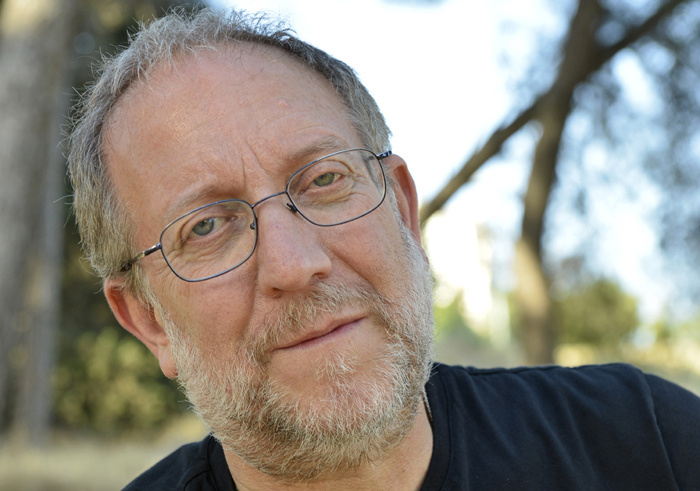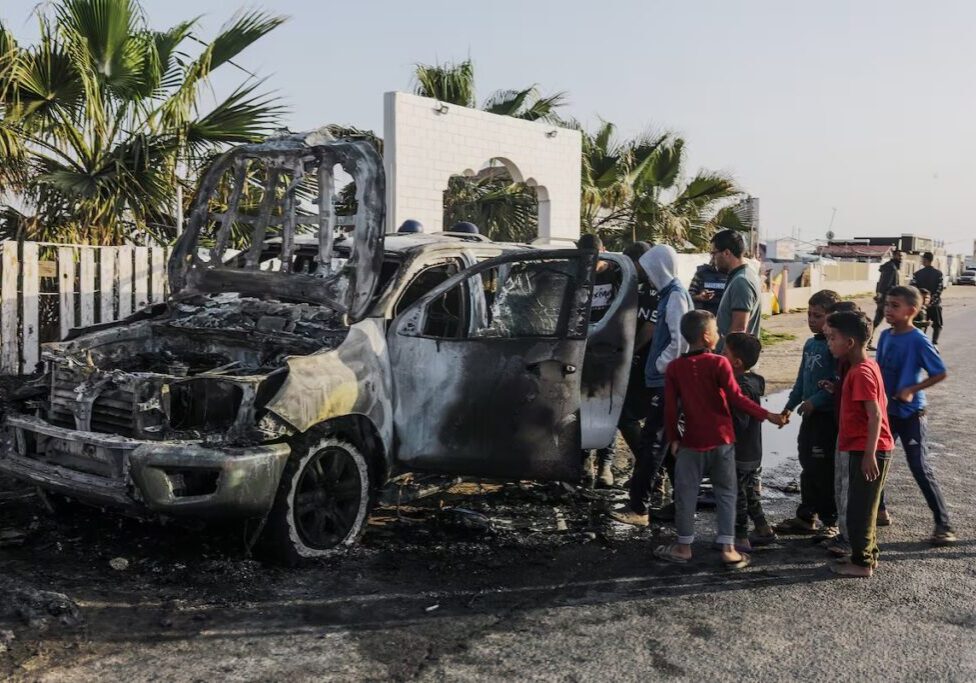Australia/Israel Review
The Bibio File: From Dreams to Dilemmas
Oct 30, 2013 | Elliot Abrams

Elliot Abrams
Like Dreamers
by Yossi Klein Halevi, Harper, 575 pages, $35
Here’s a great idea for a novel: Tell the story of modern Israel through heroic characters. Use some real individuals as models, but invent the details to build interest. Take history’s dramatic stories – from the early Zionist movement to World War II, from the Holocaust to Israel’s War of Independence in 1948 – and present them from the perspective of actors who lived them.
That is precisely what Leon Uris did in his 1958 novel, Exodus. His blockbuster novel transformed the image of Jews from passive victims of the Holocaust to heroic Israelis.
If the history in Exodus was largely accurate, the characters were all fictional. It is against this backdrop that Yossi Klein Halevi’s achievement in Like Dreamers stands out, for he too tells the story of modern Israel – in his case, from 1967 to the present day – from the point of view of a small group of archetypal characters. But his book is fact, not fiction, and his dramatis personae are all real. Mr. Halevi follows seven main characters, soldiers in Israel’s elite 55th Paratroop Brigade, as they fight in wars, win astonishing victories, pay the price of those victories, age and part ways – sometimes bitterly – over the political dilemmas the young nation faces.
The author moved to Israel from the US in 1982 at age 29. He had been inspired by Israel’s dramatic military feats, including the almost miraculous victory in the Six Day War of 1967 and the capture of Jerusalem. “From time to time,” he writes, “I thought about interviewing veterans of the battle of Jerusalem… How had the war changed their lives? What role did they play in trying to influence the political outcome of their military victory?” He has spent the past 10 years following the lives of the paratroopers, becoming very close to several. He watched as they split into leaders and activists of the peace and settlement movements: the former culminated in the Oslo and Camp David Accords, while the latter built and built until today 300,000 Israelis live beyond the 1967 lines.
The title of the book comes from the 126th Psalm: “When the Lord returned the exiles of Zion, we were like dreamers.” That is the sense Mr. Halevi gives us of Israel in 1967. He describes in detail the actions of these paratroopers in the Battle of Jerusalem, but he is at his best capturing the mood: “It was impossible, but here they were, sovereign again in Jerusalem, just as Jews had always prayed for and believed would happen. Strangers smiled at each other: We are the ones who made it to the end of the story.” The Western Wall of the Second Temple, off limits to all Jews since 1948, was now in their hands.
The book’s cover shows the iconic photograph of young soldiers standing at the wall, looking up at it as if at the face of God. As Mr. Halevi explains, “Israelis were celebrating existence. For Jews to have learned to fight so well, so soon after they died in their helpless millions, was an affirmation of their life force. The world hadn’t changed: not only was Auschwitz possible, but so was an assault on its survivors. No matter: the Jews had changed.”
Then, in 1973, Israel was caught by surprise on Yom Kippur, the holiest day of the year. Mr. Halevi describes the moment: “Sirens sounded like a premature blast of the shofar that ends the Yom Kippur fast. It was the fifth war in Israel’s twenty-five years of existence.” Again the 55th Brigade was the tip of the spear: Israel suffered a week of setbacks in Sinai and on the Golan but finally turned the tide. The 55th pushed the Egyptians back from Sinai and crossed into Egypt. But these were no longer the youngsters of 1967: “Most of them were now in their late twenties and early thirties, married with children.”
After the ’73 war, two of the men whose stories are told here, Yoel bin Nun and Yisrael Harel, helped found the settler movement: Jews should move into the “West Bank”, for it is Judea and Samaria where so much of the Hebrew Bible takes place. As Mr. Halevi shows in the telling of these two lives and those of the less religious paratroopers who had emerged from the kibbutz movement, Israel was changing in the 1970s: “The pioneering momentum had shifted to the Orthodox,” and the secular Zionism of the founders of the state was being overrun.
The 1967 conquest of Jerusalem, as well as the West Bank and Gaza (and all of Sinai and the Golan Heights), sowed the seeds of deep divisions among Israelis: What was now to be done with these territories and the Arabs who lived in them? For men like Messrs. bin Nun and Harel, the answer was obvious: “Surely even the most stubborn skeptics would now understand that God was in this story.” Yet even among religious Jews there were divisions: Was Zionism about reconquering the entire biblical land of Israel and settling it? Or was the key goal the establishment of a secure Jewish state, whatever its boundaries? How much loyalty did religious Jews owe to the state of Israel?
Meanwhile, other Israelis formed the “peace camp”: They believed that the territories seized in 1967 must be returned to the Arabs as fast as possible, lest wars and terror never cease -and lest Israel change from a “light unto the nations” into a nation of occupiers. To them, the settlements were a disastrous mistake, and the negotiating path was the means of salvation.
In 1982, Mr. Halevi’s paratroopers fight in Israel’s sixth war, in Lebanon. The young soldiers of 1967 are approaching middle age. One, Udi Adiv, travels to Damascus and connects to terrorist groups – and spends 12 years in prison for sedition. On religion, politics and the role of religion in politics, this band of brothers is now deeply split. “For one part of the nation,” Mr. Halevi explains, “remaining in the territories was an existential threat; for another part, the existential threat was withdrawing. How could Israel determine its relationship with the territories won in the Six-Day War without tearing itself apart?”
Israel continues to search for an answer to that question today: Land for peace? Withdrawal without peace? “The left had been correct about the dangers of occupation,” Mr. Halevi concludes, “but the right had been correct about the chances for peace.” Mr. bin Nun, the religious Zionist and settler, tells the author of a conversation that he had had with Yitzhak Rabin just days before the Prime Minister was assassinated in 1995. Rabin had signed the Oslo Accords with Yasser Arafat and was now pulling Israeli troops out of West Bank cities. “If this is what you’re giving away now,” Mr. bin Nun asked Rabin, “what will you have left to offer in a final status agreement?”
“‘Yoel,’ said Rabin, looking at him steadily, ‘there will be no final status agreement. It is impossible to reach an agreement on Jerusalem.'”
Mr. Halevi is in sympathy here with Rabin, but also with Rabin’s opponents among the settlers. This isn’t because he lacks understanding but because his cup runneth over with compassion – with understanding of the difficult choices Israel faces.
At the end of the book, Mr. bin Nun is commemorating Jerusalem Day, which celebrates the reunification of the city, as he does each year: by leading students – in this case, in 2004, a mixed group of religious yeshiva students and secular army recruits – on an all-night tour of the sites where the Battle of Jerusalem was fought 37 years before. He reflects: “How had they done it? Reclaimed land, language, sovereignty, power? Reversed the destruction of the Jews back to their origin, their vigorous youth. Replaced heaps of skeletons in death camps with paratroopers at the Wall as the enduring Jewish image of the century?” They had done it through work, sacrifice, faith, luck, suffering, God’s grace. Israelis have many different answers, as Mr. Halevi shows.
When Leon Uris wrote Exodus it was unclear whether the State of Israel – the Zionist movement’s answer to the age-old problem of Jewish statelessness – could survive in the Middle East’s harsh soil. Today Israel’s survival is far more secure, yet it is still far from being the “normal state” that the founders of Zionism sought. Its national life remains an endless debate over what Mr. Halevi calls “the agonising complexity of Israel’s dilemmas.” Mr. Halevi’s masterly book brings us into that debate and the lives of those who live it, not through fiction but through a factual account illuminated by his own intelligence and empathy.
Elliot Abrams is a senior fellow at the Council on Foreign Relations and was deputy national security adviser in the George W. Bush Administration. © Wall Street Journal, reprinted by permission, all rights reserved.
Tags: Israel






